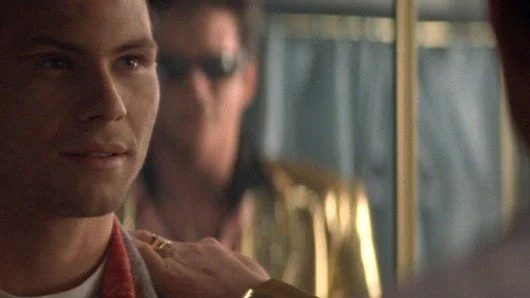We’ve all been brought up on a steady diet of iconic partnerships that hold a special emotional, even symbolic, place in our heads and hearts.
Thelma and Louise
Maverick and Goose
Butch and Sundance
And my personal favourite – Clarence and Alabama Worley.
The partnership trope works on screen and page because it reflects truisms that we all, instinctively, know about life.
No-one, no matter how brilliant, knows everything, nor can do everything by themselves.
The strength of one partner can often compensate for a weakness or deficit in the other.
Working in unison, or synergy, has a multiplier effect that dwarfs the impact or progress possible from either individual working alone.
I’m equally mindful that partnerships aren’t always all upside. Certainly, the personal favourites I’ve listed above didn’t all ride, drive or fly happily off into the sunset unscathed. In fact most met a sticky – but triumphant – end sticking it to “the establishment”
In business, I’ve always considered the artful partnership of Strategy and Culture to be the most crucial and impactful combination possible.
For the zealots and passionate advocates who believe in the primacy of either Strategy or Culture, I’m struck by how wildly reductionist even inaccurate that perception is.
Continuing the same heretical view that will likely get me lambasted by friends on either side of that divide, I’ve always considered Strategy the masterful art of determining WHAT we need to do in order to win/succeed as a business and Culture as an encompassing definition of HOW we can achieve that grand strategic ambition.
Purists will ask, what about organizational design, what about leadership behaviours, what about organizational capabilities and competencies? I would simply say those all elements directly impact, inform, create, nurture or transform that delicious outcome we call Culture.
And ironically, after years of hearing and reading about how culture is universally misunderstood and impossible to define cogently, it was interesting to hear Top50 Thinker and pre-eminent Strategy thought Leader Roger Martin recently quip that Strategy is one of the most misunderstood concepts in business.
Here’s why I believe in partnership, rather than primacy, between Strategy and Culture.
An excellent Strategy that can’t be executed because of a reticent and uncommitted Culture is nothing more than a phenomenal Powerpoint. What you’re trying to do is well-articulated but the how to get it done is severely hobbled, even crippled.
Equally a great Culture, filled with enthusiastic and committed employees, is not a silver bullet for an organization that cannot engage and effectively deploy that talent by giving them meaningful purpose and clear direction. To use more classic Roger Martin language, if you haven’t determined the strategic foundation of “Where to Play” for your firm, your culture becomes a metaphorical cart in front of an invisible horse.
My own fascination with Culture, after years of being fascinated by Strategy, reflects some rumination about some of my own career and client experiences. Two in particular have always stood out as examples of where getting the Strategy and Culture partnership perfectly synced was so critical and sadly so missing.
Enron’s strategy of being a disruptor in highly-regulated, often stodgy bureaucratic sectors was famously driven by a mantra of “why” (as in why are things done like this) and a break all the rules and norms mentality. Sadly, when that gung-ho mentality infused a highly-competitive culture to avoid, ignore or obfuscate any rules, the organization famously and publicly ran aground.
Nokia’s leadership in the global mobile phone category was unprecedented and, in 2012 when they enjoyed a commanding 50% or more market share, unrivalled. However, a cultural “blind spot” that couldn’t conceive of a “PC and Music” upstart from California as a potential competitive threat to their device omnipotence, proved to be a fatal flaw.
This 2007 Fortune cover does seem rather ironic in hindsight.
I acknowledge that I’m simplifying, possibly romanticizing, the Enron and Nokia debacles to prove my point about the Strategy and Culture partnership versus primacy. A singular focus on either, without a full and complete reckoning of the impact on the other, is a classic and oft-made mistake.
This is not, to paraphrase the most mis-quoted quip in business history, about one eating the other for breakfast, lunch or any other meal.
This is about ensuring synergy, developing complementary capabilities, and ultimately, about winning in the market.
Isn’t that what all partnerships should do.
++++++++++++++++++++++++++++++++++++++++++++++++++++++++++++++++++++++++++++
For those of you who are unfamiliar with my favourite partnership – Clarence and Alabama Worley – they’re characters in the movie “True Romance”. The movie was written by Tarantino and features an incredible ensemble cast of OMG they’re in this movie too – Pitt, Oldman, Samuel L Jackson, Gandolfini.
So many brilliant scenes in the movie but this one with Clarence and his celebrity partner remains one of my favourites.
** This is NSFW content…good job we’re all working remotely!!


